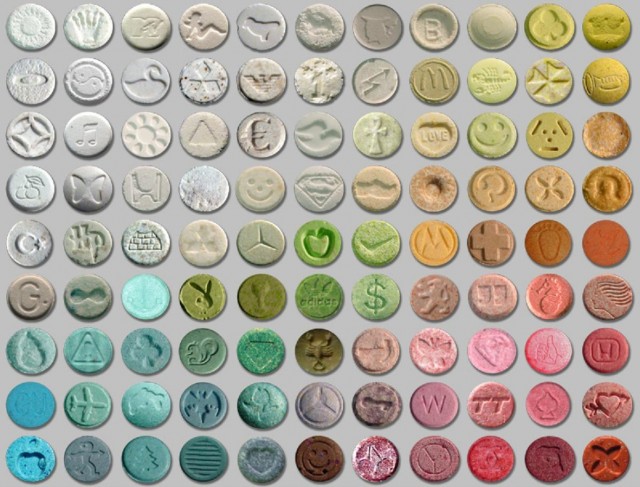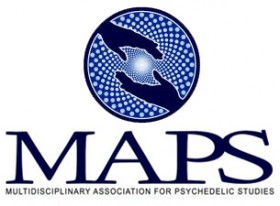
The drug scene is an interesting litmus test for society. In turbulent and revolutionary times, drugs like acid and other psychedelics were sought after while eras of opulence and unchecked narcissism see heavy use of mindless partying drugs such as cocaine and speed. Somewhere in the middle of vacant escape and enlightenment, we come across drugs like Molly also known as MDMA. Molly is a uncut form of ecstasy that comes in a powder form so rather than a pill like ecstasy that is a composite of other drugs, very commonly pharmaceuticals like Adderall, MDMA is just the chemical compound it claims to be.
MDMA has shared a lot of the negative press that its counterpart ecstasy has invited since the use of ecstasy has been linked to overdoses and deaths resulting from dehydration but MDMA has a history closer to a psychedelic than a party drug. It’s introduction was in marriage counseling because therapists believed it to release inhibitions and allow people to be more open. Though this practice is no longer used, there are new applications for the drug that don’t involve spandex outfits and raves.
 At MAPS, Multidisciplinary Association of Psychedelic Studies, in Santa Cruz, CA, the latest break-through the association has seen has been the use of MDMA on patients that have PTSD, post-traumatic stress disorder, and its ability to not only help relieve their symptoms but also start the recovery process faster than therapy alone.
At MAPS, Multidisciplinary Association of Psychedelic Studies, in Santa Cruz, CA, the latest break-through the association has seen has been the use of MDMA on patients that have PTSD, post-traumatic stress disorder, and its ability to not only help relieve their symptoms but also start the recovery process faster than therapy alone.
“We’ve had amazing results with this,” says Brad Burge, the director of communications for MAPS. “Most of the patients are survivors of rape or assault and in just three sessions, we’ve seen complete transformations.”
The idea behind using these types of drugs as therapy is one that is still met by skepticism but all the studies that MAPS funds take place over several years with small, monitored amounts being distributed. Within the MDMA trails, there have been no negative lasting effects. The negative press that MDMA has received comes from people that use it recreationally and often are unaware of how much they are doing. Tinkering with brain chemistry is dangerous but specific drugs are being demonized for the wrong reasons.
“It’s really like scar tissue in one’s brain,” says Burge when discussing the effects of the experiment. “MDMA works to dissolve the scar tissue so that a person’s brain can return to normal function instead of still being haunted by their trauma.”
Think of trauma as some type of sticky substance, like honey or molasses but awful and not delicious. Trauma can take over someone’s brain so fully that other functions are cut off and stuck, in a sense. What substances like MDMA do is shake a set perspective and cause a metaphorical flexibility within a patient’s mind. Changing a person’s perspective is one of the hardest things to do. With MDMA aiding, the patient is drawn away from their personal view. This causes them to see how seriously the world takes everything and how seriously they’ve allowed their trauma to hurt them.
MDMA in these studies is used to bring around a mental breakthrough that traditional therapy has struggled to do. In small doses, the drug has no negative effect, according to the MAPS, and the patient is now able to see beyond their problem.
“Psychedelics and MDMA are good for reminding people how trivial things are,” says Burge. “Not that the trauma these people has undergone is trivial but MDMA makes the trauma have less power. It makes them remove themselves from the context so they can start healing.”
MDMA as a healing agent is still a less known use for it. The main scene in which MDMA appears is the dance and music scene. Raves and electronic music shows are famous for having high consumption rates for MDMA and Ecstasy. The style of ravers is even sculpted by the drug use, resulting in bright and shiny colors and tactile textures.
These drugs have been a driving force in the dance music and rave world as well as a detriment. Ecstasy caused a lot of problems because of other substances cut into it. The pure form was a savoir to the dance scene since people were more aware of how much water their bodies were losing and how tired they were getting instead of being overly stimulated and unable to determine how long they had been dancing for. Raves are known for going on for extended periods of time, all night is child’s play for these parties, and MDMA has a less speedy effect than the tampered-with ecstasy so someone can stay up but is not necessarily burning themselves out.
MDMA is an unusual drug and its chemical make-up is not that different from methamphetamine but its uses are wildly varied. The ravers and the music scene enjoy it for its stimulating quality and the good folks at MAPS are seeing its use as a tool for healing damaged psyches. The reputation MDMA has as a straight party drug is beginning to fade. Hopefully soon we’ll see it being used for fun as well as medicine.









